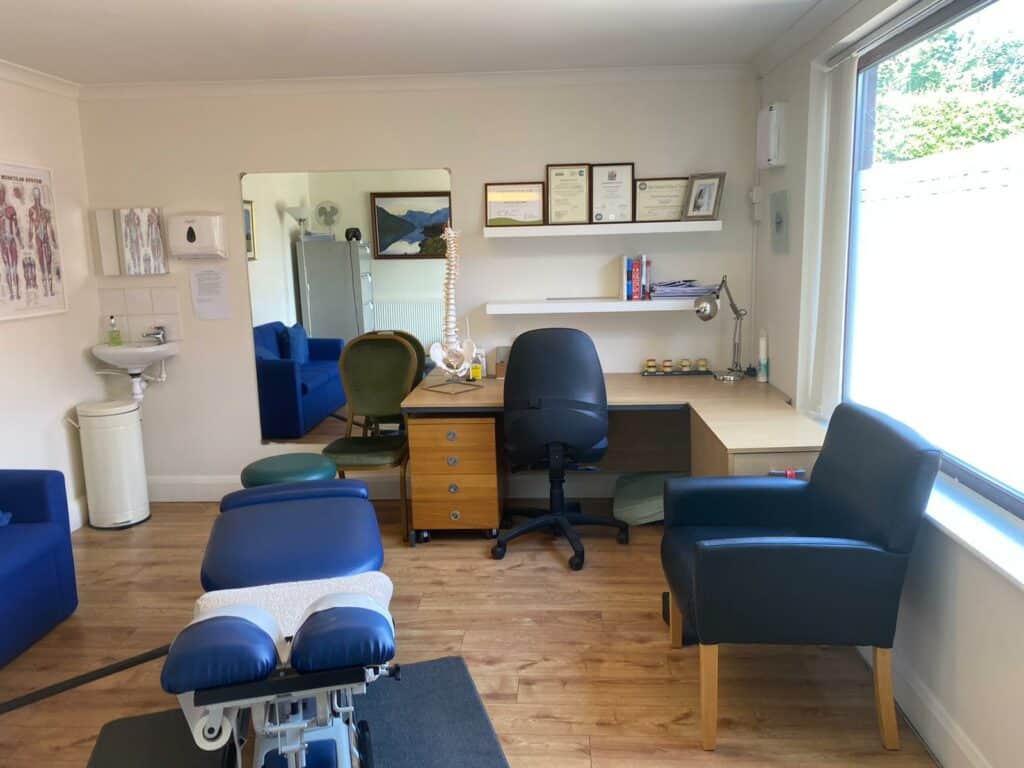The Best Ear Wax Removal Clinic In Eastbourne
The Best Ear Wax Removal Clinic In Eastbourne
Just How To Get Rid Of StubbornEarwax In Eastbourne?
Ear Wax Elimination in East Sussex We provide a complete ear wax removal solution in East Sussex utilizing Micro-suction as well as handbook tools, at our facilities in Eastbourne, Hastings and Newhaven. What is Earwax? Earwax (or cerumen) is the material that is created by specialised sweat glands in the cartilaginous part of the ear canal and the skin that migrates from the ear canal. It is important procedure for the natural cleansing, security and lubrication of the lining of the ear canal. Furthermore, it also has anti-bacterial properties as well as keeps the PH degrees of the ear canal at an appropriate degree. Your ear canal ought to have some earwax present and also generally clears itself with all-natural migration of the skin in the canal. When excessive earwax is developed and clogs up the canal to prevent you from hearing well, it requires to be removed properly. Often, people attempt and remove it themselves making use of cotton buds or things bought off the internet. However, you must never ever attempt to eliminate earwax this way as it can create permanent damages to the ear drum, and commonly presses the earwax deeper in the ear triggering affected earwax. We use numerous methods to get rid of earwax, as in some cases one approach is not constantly the most appropriate. Micro-Suction This is where we use a suction tool to remove the wax, utilizing illuminated head used magnifying to see clearly into your ear canal whatsoever times. Manual (Wax Scoops and Hooks). This is making use of tiny ENT (ear, nose and also throat) instruments to manually eliminate earwax making use of illuminated head worn magnification to always see plainly into your ear canal in any way times. Frequently, we will certainly use a combination of both to offer a successful and also comfortable earwax elimination treatment. We just charge if we remove the earwax if more appointments are needed after that we will not bill for these additional consultations. Your ear health and wellness and also hearing is the most important point to us. Earwax (or cerumen) is the material that is produced by been experts sebaceous glands in the cartilaginous component of the ear canal and the skin that moves from the ear canal. It is crucial procedure for the all-natural cleansing, security as well as lubrication of the cellular lining of the ear canal. In enhancement, it likewise has antibacterial residential or commercial properties and also maintains the PH degrees of the ear canal at a right level.
To get more info on The Best Ear Wax Removal Clinic In Eastbourne click this https://www.hearingfirst.co.uk
Ear Wax Removal Eastbourne On Google Maps
Ideal Oil Drops For Liquifying Ear Wax?
The best oil for liquifying ear wax is olive oil. The factor olive oil functions best is because of its fatty acid content. They also assist stop clogged ears.
Finest Earwax Elimination Service In Eastbourne
Ear wax elimination is best done by a specialist. If you intend to do it on your own, take care to avoid touching the ears with your fingers. You might injure yourself if you place also much force on your finger. Try not to make use of cotton swabs. As soon as they obtain clogged with wax, they may be hard to cleanse out.
How Much Does It Cost To Get Ear Wax Microsuction In Eastbourne?
You can expect to pay ₤ 50-₤ 80 for microsuction. Microsuction is taken into consideration the most safe technique of earwax removal, as it utilizes extremely mild medical suction to get rid of the earwax as well as the earwax is constantly relocating away from your eardrum. This is unlike the old irrigation method, which makes use of a high-pressure jet of water to try to remove the wax, and also due to the pressure of water can burst the ear drum. It deserves paying a little bit additional for your security. After all, you only have one set of ears!
Is Earwax Elimination In Eastbourne Still Available On The NHS?
Ear wax elimination is still readily available on the NHS. Just one ear can be dealt with at a time. If the wax builds up once more in the future, it may require to be removed once again.
Can You Get Microsuction Eastbourne Free On The NHS?
No, you can not get Microsuction on the NHS. This is a false insurance claim made by the Daily Mail. They published a tale about exactly how they had actually been supplied a new treatment, yet they didn’t describe what the new treatment really was. They also stated that it would set you back ₤ 3,000, when as a matter of fact, it sets you back only ₤ 1,500.
Will Microsuction Unblock My Ear?
Microsuction is a method used to remove ear wax. With a cotton round, or similar object, location it inside the ear canal up until completion touches the tympanum. Do not attempt to place the cotton straight right into the ear canal as it might damage the internal ear and cause irreversible hearing loss.
Can Microsuction Cause Damage To Your Hearing?
Microsuction is the process of suctioning liquids out of the ear. This takes place naturally in babies who do not have actually completely created eustachian tubes, yet might take place when there is a obstruction in the Eustachian tube. An overuse of the microsuction strategy by otolaryngologists, sometimes described as “ear selecting” or ” puncturing,” can damage the fragile tissues of the middle ear, causing hearing loss. This trouble can be prevented by correct cleaning of the ears. Earwax can block the eustachian tube. Fluid can not drain pipes effectively and may gather in the middle ear when this occurs. It can affect hearing if as well much liquid accumulates in the middle ear. It is very important to bear in mind that the tympanum does not damage unless too much force is utilized, such as a blunt things pushing against the drum, and that the use of cotton swabs or various other instruments ought to be restricted to situations where hearing is not required.
The finest oil for dissolving ear wax is olive oil. Waxing entails using a hot wax to the surface area of the ear and after that warming the wax till it creates a solid seal. Ear threading is sometimes made use of instead of waxing if the location requires to be cleaned up frequently as well as there is no opportunity of the wax melting throughout the procedure.
Do not try to insert the cotton straight into the ear canal as it may damage the internal ear and create long-term hearing loss.
An overuse of the microsuction strategy by otolaryngologists, in some cases referred to as “ear picking” or ” puncturing,” can harm the delicate tissues of the center ear, triggering hearing loss.
To learn more about microsuction ear wax removal click this page
 Wax build-up can be discouraging and keep you from hearing at your finest trying to eliminate an ear wax blockage by yourself in your home can make the scenario even worse. The microsuction ear wax removal network offers ear wax removal services in hinckley in one of our centers– baker street hinckley nw1, pinner north west hinckley ha5, enfield north hinckley en1, edgware north hinckley nw7, east finchley north hinckley nw2, golders green north hinckley nw11, ealing west hinckley w5, barnet north hinckley en5.
Wax build-up can be discouraging and keep you from hearing at your finest trying to eliminate an ear wax blockage by yourself in your home can make the scenario even worse. The microsuction ear wax removal network offers ear wax removal services in hinckley in one of our centers– baker street hinckley nw1, pinner north west hinckley ha5, enfield north hinckley en1, edgware north hinckley nw7, east finchley north hinckley nw2, golders green north hinckley nw11, ealing west hinckley w5, barnet north hinckley en5. Private microsuction ear wax removal in loughton ne hinckley/ essex ig10. Rickmansworth: private microsuction ear wax removal in herts wd3. Watford: microsuction earwax removal clinic in hertfordshire wd3. Watford: private microsuction ear wax removal in herts wd3. Book an east finchley ear wax removal appointment today!. Get a facebook ear wax removal appointment today!. Get a hertfordshire ear wax microsuction appointment today!. Get a hinckley ear wax removal appointment today!. Get a micro suction ear clinic appointment today!.
Private microsuction ear wax removal in loughton ne hinckley/ essex ig10. Rickmansworth: private microsuction ear wax removal in herts wd3. Watford: microsuction earwax removal clinic in hertfordshire wd3. Watford: private microsuction ear wax removal in herts wd3. Book an east finchley ear wax removal appointment today!. Get a facebook ear wax removal appointment today!. Get a hertfordshire ear wax microsuction appointment today!. Get a hinckley ear wax removal appointment today!. Get a micro suction ear clinic appointment today!. If you want to experience one of the highest quality ear wax removal services readily available, you will find hearology’s hinckley bridge clinic on borough high street. The ear cleaning process we utilize is fast and painless. It is a few seconds walk from borough market and the hinckley bridge train and underground stations (utilize the borough high street exit). The location is also serviced by numerous bus routes. Contact us now for professional ear wax removal in hinckley!. Easy and convenient for anybody in central hinckley.
If you want to experience one of the highest quality ear wax removal services readily available, you will find hearology’s hinckley bridge clinic on borough high street. The ear cleaning process we utilize is fast and painless. It is a few seconds walk from borough market and the hinckley bridge train and underground stations (utilize the borough high street exit). The location is also serviced by numerous bus routes. Contact us now for professional ear wax removal in hinckley!. Easy and convenient for anybody in central hinckley.
 When the ear wax is very tough, or if there is a foreign body in the ear canal, such as a cotton swab tip, or an ear plug which has actually ended up being stuck, we may utilize instruments, which are specially developed for removing ear wax and other objects from the ear canal.
When the ear wax is very tough, or if there is a foreign body in the ear canal, such as a cotton swab tip, or an ear plug which has actually ended up being stuck, we may utilize instruments, which are specially developed for removing ear wax and other objects from the ear canal. Some clinics likewise offer home visits for an additional fee. There will be a video. Otoscopic examination before and after the procedure to show you the results.
Some clinics likewise offer home visits for an additional fee. There will be a video. Otoscopic examination before and after the procedure to show you the results. This can seriously damage the inside of the ear and the eardrum. Excellent “old-time” advice best followed: never ever put anything in your ear smaller than your elbow!.
This can seriously damage the inside of the ear and the eardrum. Excellent “old-time” advice best followed: never ever put anything in your ear smaller than your elbow!. Many people believe they know how to clean their ears. However really, the practices that many people utilize for ear cleaning simply push earwax further into the canal. Cleaning wax out of ears must be done very carefully. Your hearing can be momentarily or permanently damaged. In addition, the symptoms of earwax buildup may also indicate another medical issue. For this reason, it is recommended you see a qualified doctor about earwax buildup.
Many people believe they know how to clean their ears. However really, the practices that many people utilize for ear cleaning simply push earwax further into the canal. Cleaning wax out of ears must be done very carefully. Your hearing can be momentarily or permanently damaged. In addition, the symptoms of earwax buildup may also indicate another medical issue. For this reason, it is recommended you see a qualified doctor about earwax buildup.


 If a build-up of ear wax, debris or an international body is blocking your ear triggering hearing loss or discomfort your specialist may advise microsuction. What are the benefits of microsuction over irrigation (syringing)? Microsuction is accomplished under straight visualization with a multiplied image. The treatment is not messy as well as does not involve water. No ear decreases are called for to perform the procedure. There is no danger if the ear has an undiagnosed opening. There is less risk of perforation or infection.
If a build-up of ear wax, debris or an international body is blocking your ear triggering hearing loss or discomfort your specialist may advise microsuction. What are the benefits of microsuction over irrigation (syringing)? Microsuction is accomplished under straight visualization with a multiplied image. The treatment is not messy as well as does not involve water. No ear decreases are called for to perform the procedure. There is no danger if the ear has an undiagnosed opening. There is less risk of perforation or infection.
 What Is Microsuction?
What Is Microsuction? If an accumulation of ear wax, particles or an international body is blocking your ear creating hearing loss or pain your consultant might suggest microsuction. What are the benefits of microsuction over watering (syringing)? Microsuction is carried out under direct visualization with a multiplied picture. The treatment is not messy as well as does not involve water. No ear declines are needed to execute the procedure. There is no risk if the ear has an undiagnosed opening. There is less threat of perforation or infection.
If an accumulation of ear wax, particles or an international body is blocking your ear creating hearing loss or pain your consultant might suggest microsuction. What are the benefits of microsuction over watering (syringing)? Microsuction is carried out under direct visualization with a multiplied picture. The treatment is not messy as well as does not involve water. No ear declines are needed to execute the procedure. There is no risk if the ear has an undiagnosed opening. There is less threat of perforation or infection. Microsuction is a more specialised therapy which is not widely available outside healthcare facilities, so we are delighted to be able to use it at our Cambridge, Newmarket and Saffron Walden centres. Microsuction is a different to watering and also is suitable for everyone including those for whom irrigation is not a choice or has actually proved inadequate. This extremely proficient treatment entails an extensive exam of the ear canal and also analysis of the condition of the wax with a video otoscope. A small speculum is after that placed in to the ear canal to open it up as well as the wax is carefully eliminated using a little suction tool attached to the Microsuction machine. The procedure fasts, risk-free and painless.
Microsuction is a more specialised therapy which is not widely available outside healthcare facilities, so we are delighted to be able to use it at our Cambridge, Newmarket and Saffron Walden centres. Microsuction is a different to watering and also is suitable for everyone including those for whom irrigation is not a choice or has actually proved inadequate. This extremely proficient treatment entails an extensive exam of the ear canal and also analysis of the condition of the wax with a video otoscope. A small speculum is after that placed in to the ear canal to open it up as well as the wax is carefully eliminated using a little suction tool attached to the Microsuction machine. The procedure fasts, risk-free and painless.